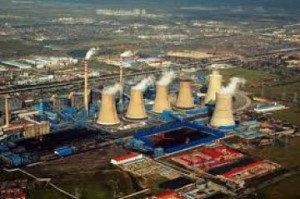 All governments that take their responsibilities seriously face the challenge of balancing economic and social priorities with those relating to energy and the environment. For China, this challenge is particularly fraught given the structure of its economy and energy mix. In order to achieve a balance these priorities over the long term, the government often has to adjust the weight given to different priorities over the short-term. The recent surge in infrastructure investment suggests that such an adjustment is taking place right now.
All governments that take their responsibilities seriously face the challenge of balancing economic and social priorities with those relating to energy and the environment. For China, this challenge is particularly fraught given the structure of its economy and energy mix. In order to achieve a balance these priorities over the long term, the government often has to adjust the weight given to different priorities over the short-term. The recent surge in infrastructure investment suggests that such an adjustment is taking place right now.
The eleventh five-year plan period (2006-2010) saw remarkable success in driving down energy and carbon emissions intensity as well as the total emissions of sulphur dioxide and other atmospheric pollutants. The twelfth five-year plan (2011-2015) set a number of ambitious targets, most notably to reduce energy intensity by 16% and carbon emissions intensity by 17%, and to increase the proportion of non-fossil fuels in the energy mix from 8.6% in 2010 to 11.4% in 2015. Achievement of these aims would help enhance the country’s energy security, improve the quality of its air and contribute towards China honouring its pledge to reduce carbon emissions intensity by 40-45% between 2005 and 2020.
In order to meet these goals the government has set in place a number of parallel strategies to change the energy mix by constraining the production and use of coal, promoting the production and use of hydro-electricity, nuclear power, wind and solar energy, and intensifying efforts to produce gas, including the exploitation of shale gas and the production of synthetic natural gas from coal. At the same time, the measures to reduce energy intensity that were launched in 2004 continue to be deployed. Energy prices have been raised and new tariff structures introduced. Growing public concern over air pollution has added extra urgency to these measures, especially the need to switch from coal to natural gas and to reduce emissions from road vehicles.
Aside from these measures directed at the energy sector, arguably the most important strategy has been the government’s stated intention to change the structure of the economy away from over-reliance on infrastructure investment and heavy industry towards a greater role for services and consumption. In support of this goal, the government has been cutting back on infrastructure investment and has raised capital reserve requirements for banks.
A few months ago, statistics were suggesting that the government had a good chance of meeting some of the key targets in the five-year plan. After a slow start in 2011, the pace of change picked up in 2012 and 2013. During the three years 2011-2013, energy intensity fell by 9.0% and carbon emissions intensity by 10.7%. In 2013, GDP rose by just 7.7% compared to 10.1% in 2010, total energy consumption increased by 4.7%, and coal use grew by just 4.0%, the lowest rate since 2001. The share of non-fossil fuel use reached 9.8% in 2013.
However, the government has other policy concerns relating to urbanisation, the property market and unemployment. One of the top priorities for the current leadership is to continue the long-term programme of urbanisation, but to improve the quality of the process. Between now and 2020, an additional 100 million people are to be accommodated in cities. Tied to this priority for urbanisation is a fear that low levels of economic growth will cause a crash in the property market. With these factors in mind, in March of this year the government announced a new programme of infrastructure investment. In addition to construction of the city buildings themselves, this programme includes railways, airports, harbours and a range of clean energy projects. In response to the new government priorities, investment in infrastructure rose by 22% in April and by 28% in May. This compares to an average of less than 10% in the first three months of the 2014.
Regardless of how clean and green these new cities will be when they are finished, their construction will need large quantities of steel, cement and plate glass, all of which are energy intensive products. Further, cities that are more efficient in the use of land require taller buildings, and these are more steel intensive than lower buildings. The overall effect is likely to be to an increased rate of growth of energy consumption and a reduction in the rate of decline of energy intensity. The question is what the source of this additional energy supply will be.
In the past, coal has always been the first fuel to respond to a sharp increase in overall energy demand, because the mines exist and their output can be boosted fairly quickly. Right now, the only other primary source of energy which could help to fill the demand gap at short notice is imported liquefied natural gas (LNG). China’s capacity to import LNG is set to double between 2012 and 2015. Together with additional pipeline capacity from Central Asia, this might, in principle, satisfy any short-term surge in demand for energy. But none of this gas is cheap and the infrastructure to deliver the gas to where it is needed may not be in place immediately. Meanwhile, coal remains the cheapest and most flexible source of primary energy.
As a consequence, this infrastructure investment threatens to undermine the energy and emissions targets for 2015, unless the government succeeds in controlling the energy mix and the scale of investment.

